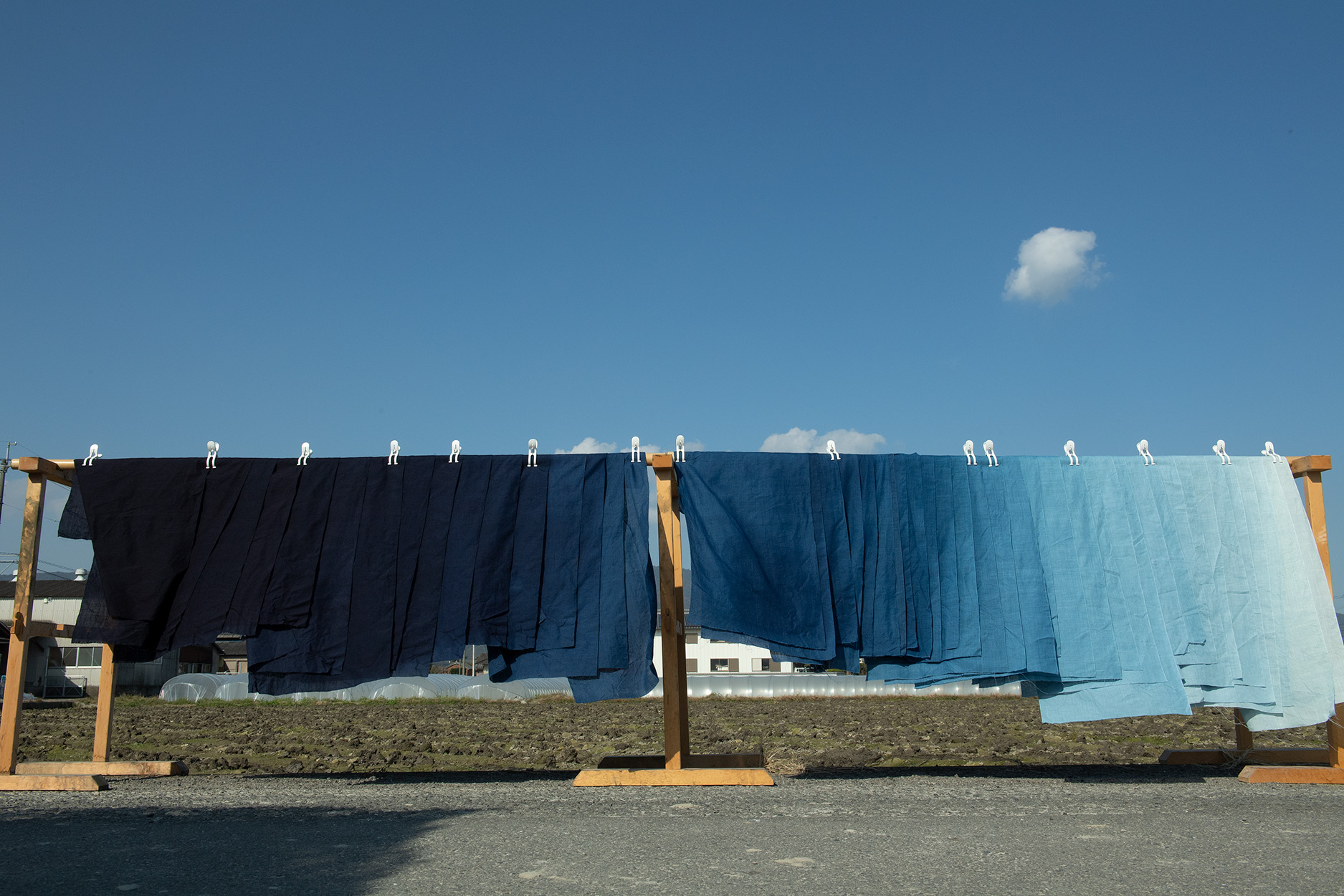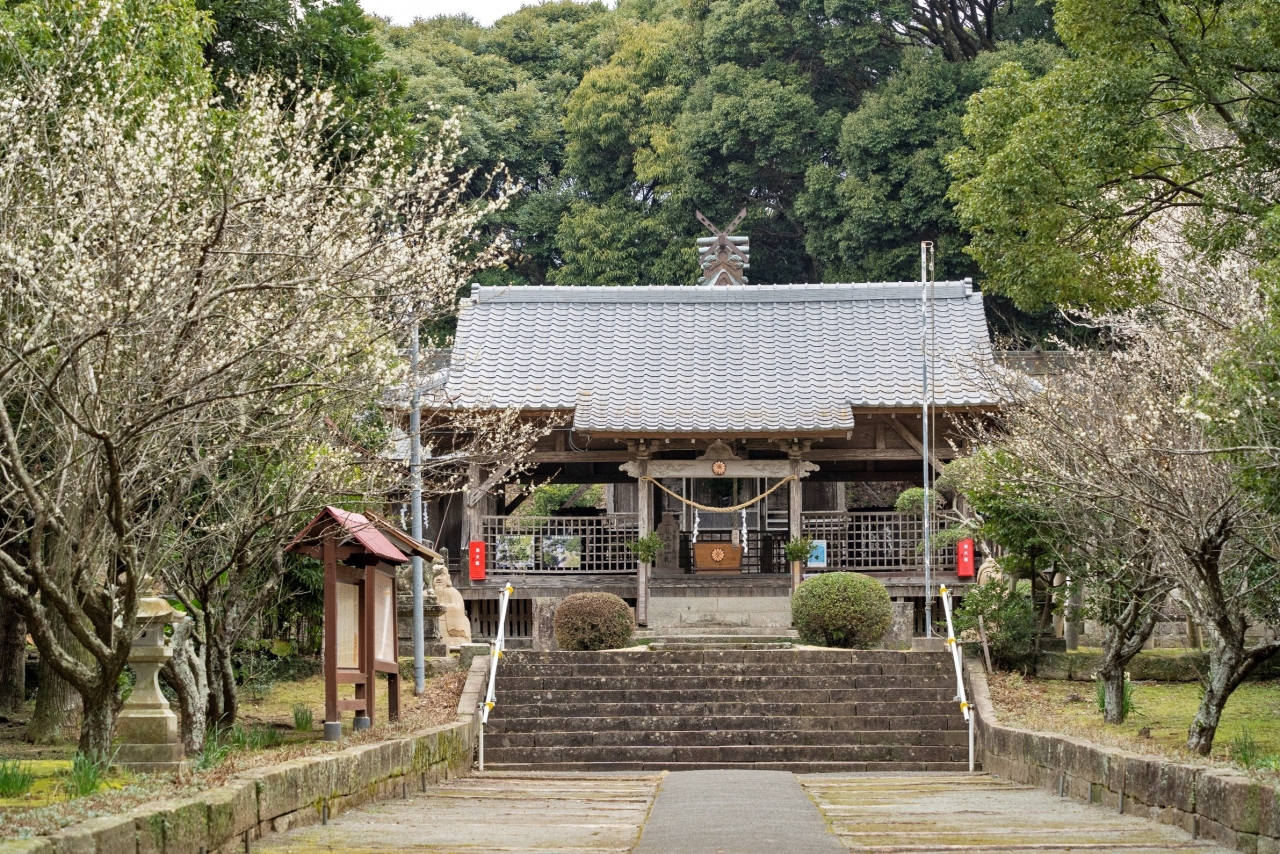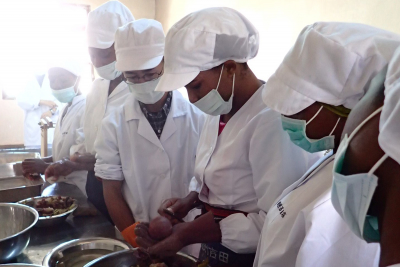
Developing a Dried Sweet Potato Export Business in Africa
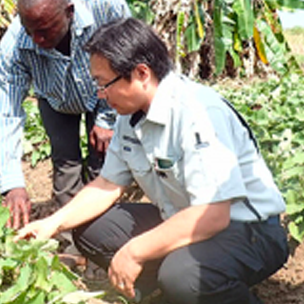
Tatsuo Hasegawa
Matoborwa Co. Ltd.
Applying Traditional Japanese Techniques to Create a New Dried Sweet Potato Business in Tanzania
Recently, dried sweet potatoes have again grown in popularity for their simple, delicious taste and their benefits as a health food. With a history that can be traced back to the Edo period, techniques for the production of dried sweet potatoes have existed for around 200 years. Matoborwa, a company established in Tanzania in East Africa, is currently hard at work to create a new dried sweet potato export business. It is doing so with support from Terunuma, a long-standing sweet potato store from Ibaraki Prefecture. Key to the project’s success is the introduction of the Tamayutaka sweet potato variety from Japan—optimally suited to the production of dried sweet potatoes—and the creation of a collaborative cultivation system with local contracted farmers. Despite the long distance between Japan and Tanzania and their two varying dried sweet potato cultures, both are working together to launch a new business. Below, we hear from Matoborwa representative Tatsuo Hasegawa about agribusinesses and food processing businesses in Africa, the background to this new venture, and its future possibilities.
Chapter.01 Matoborwa—Establishing a Dried Sweet Potato Business in Africa
Hasegawa decided to take on this new challenge after hearing how even though customers loved dried sweet potatoes, they were too expensive to buy. In 2014, he established Matoborwa in Tanzania in East Africa. Since then, he has been traveling back and forth between field and factory to create the ideal dried sweet potato. As of 2016, approximately 20,000 tons of dried sweet potato had been sold throughout Japan, but around half of this amount was imported from China. However, with a fall in import volumes from China, Japan began to experience a dried sweet potato shortage. More recently, dried sweet potatoes have soared in popularity as a health food, with product sales even spreading to drug stores.
At the time, Hasegawa was working in the neighboring Rwanda, and upon hearing about the product shortage in Japan , he began looking at the possibility of production in Africa. He was surprised to discover that Tanzania produces more than three times the amount of sweet potatoes than Japan, and that dried sweet potatoes very similar to those of Japan are traditionally made in agricultural villages. The dried sweet potatoes made in these villages are called matoborwa in the local language, a word that later became the inspiration for the name of the company. In Tanzania, after peeling the skins of the sweet potatoes, they are simmered in a pan before being cut into fine pieces and placed on a roof to dry under the scorching heat of the sun just below the equator. These dried sweet potatoes are one of the country’s traditional preserved foods, but unlike in Japan, they are boiled and soaked before being eaten, much like instant noodles.
“In a culture that already traditionally makes dried sweet potatoes, I knew that if we could introduce Japanese techniques, it would be possible to create even sweeter, softer, more delicious dried sweet potatoes like those in Japan,” says Hasegawa. Ultimately, Hasegawa came up with the idea to bring in a Japanese variety of sweet potato, optimally suited to becoming a dried sweet potato, and develop a dried sweet potato business in Tanzania. To bring the idea to fruition, he teamed up with Katsuhiro Terunuma, honorary chairman of the dried sweet potato manufacturer Terunuma. However, creating these soft and sweet dried potatoes in Tanzania proved to be more difficult than they initially imagined, and the two parties spent seven years improving the product. “Sweet potatoes are the sole ingredient, and so if you don’t improve the quality of the sweet potato, you cannot produce a delicious dried product,” says Hasegawa. What makes a quality sweet potato, then?
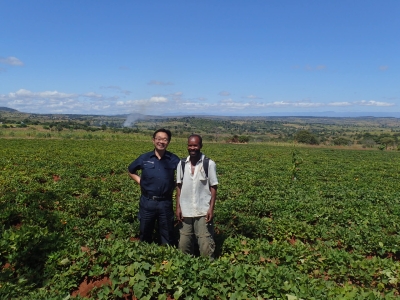
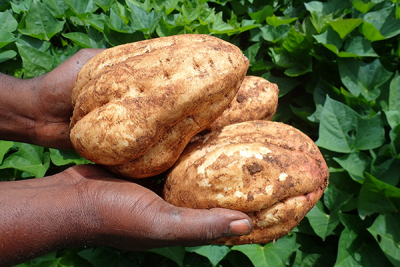
Chapter.02 Working in Tandem with Farmers to Produce World-class Dried Sweet Potatoes
The production of dried sweet potatoes takes place over the course of a year. In Tanzania, it begins in October with a briefing for farmers contracted with Matoborwa. The process of nurturing the seedlings begins in December, using the Tamayutaka variety brought over from Japan. The seedlings are nurtured in a dedicated space within the factory. When the real rainy season begins in January, these seedlings are distributed to the farmers, and the planting of these seedlings continues until March. Once they have been planted, staff from Matoborwa regularly visit these farmers and on occasion work with them on weeding and other field management tasks.
Harvesting begins in June. The sweet potatoes are dug up and tested numerous times to ascertain the perfect timing, and the utmost care is taken not to damage the potatoes when they are finally harvested. The harvested sweet potatoes are then transferred to a special container and transported to the factory’s storage facility on company trucks. Here, they are matured for several months, during which time the starches turn into sugars to make them even sweeter. In August, they are finally taken to the factory ready to be made into dried sweet potatoes.
To further enhance their sweetness, at the factory they are steamed slowly at a low temperature. The steaming hot potatoes are then peeled individually by hand, sliced, and arranged on a tray, before being placed in a Japan-made food dehydrator and dried at low temperature to ensure the flavor is maintained. This time-consuming process eventually leads to the completion of delicious dried sweet potatoes.
Quality-wise, there are many requirements—among others, it’s first important to ensure that only Tamayutaka is used and that no other varieties are mixed in. It’s also key that the potatoes are healthy enough to withstand long-term storage, and that they are free of any flaws or insect damage. They must also be of an even size suited for their procession. To procure sweet potatoes that meet these quality requirements, it is essential that Matoborwa meets with its contracted farmers in advance and works with them throughout the cultivation process. As a result of this hard work, Matoborwa’s products have received a stamp of approval from Katsuhiro Terunuma , who says, “The dried sweet potatoes are of the same quality as those from Ibaraki.”
Those working at the factory are all in full support of Matoborwa’s approach. “We don’t really advertise job opportunities. But we want our workers to enjoy producing dried sweet potatoes, and once they learn the process, we increase their salary,” says Hasegawa. Matoborwa is gradually finding success in creating employment opportunities and developing the agriculture industry in Africa.
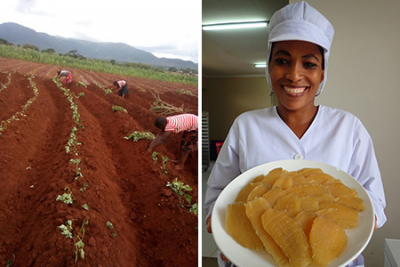
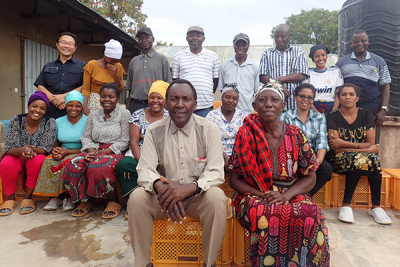
Chapter.03 Four Years for Variety Registration and Continuing Challenges
The Tamayutaka variety of sweet potatoes that is bred in Japan is essential for Matoborwa to produce the same dried sweet potatoes as those from Ibaraki. Tamayutaka is in fact an old variety that was registered in 1960, and at the time the project was launched, use of the Beni Haruka variety was becoming mainstream. Beni Haruka is an all-purpose variety that is easy to cultivate, suited to both dried and baked products, and beautiful in color. Although currently the government is promoting the registration of different varieties overseas, when the project was launched, Matoborwa could only register varieties for which breeder’s rights had expired.
The company applied for Tamayutaka registration in 2017, received notice that the variety had passed the final screening in 2020, and the registration was announced in the official gazette in 2021. From the time of its founding, it took the company seven years to secure intellectual property and to establish a platform for export to Japan, Europe, and the US. To earn working capital through this period, the company has manufactured and sold dried fruit using its dried sweet potato technique and equipment, and is even engaged in the manufacture of snacks for local consumption.
Talking about Matoborwa’s challenges, Hasegawa says, “After variety registration, the next step is fundraising.” Last year, the company used crowdfunding to raise the funds required to expand its production equipment. This year, it is speaking to various financial institutions to finance a large truck for the procurement of ingredients. Moreover, a HACCP-certified factory, which guarantees safety and security, is essential for exporting products to Japan and other countries overseas. Contracted farmers must also be organized to ensure stable supplies.
“Business in Africa is getting a lot of attention, but many new projects here involve ICT, communications, and other advanced technologies aimed at solving the continent’s social issues. Africa is a growth market that is home to an abundance of arable land, and that boasts a sound population pyramid with many young people who have healthy appetites. I want to communicate the fact that there is high, stable demand in the agriculture and food sectors. That said, Japanese companies won’t make the move without previous examples of success. We want to be this example,” says Hasegawa. As Japanese companies repeatedly expand into and then withdraw from African markets, the work of Matoborwa as a so-called early adopter is incredibly reassuring. The company’s initiative is a model example of a new approach to agriculture that combines traditional Japanese techniques with local strengths.
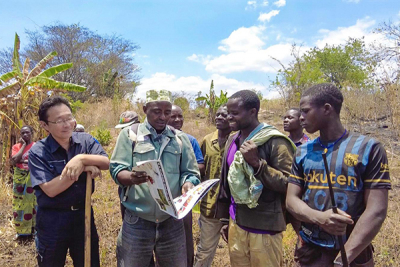

Hasegawa says that the German and Italian people he previously met in Tanzania were so impressed with the taste of these dried sweet potatoes that many took them back as souvenirs. With no sugar or additives and only the ingredient’s natural deliciousness, despite the many difficulties and challenges, “the possibilities are endless” was the perfect description for these dried sweet potatoes.
Variety registration is completed, and the company is now working on the organization of an ingredient supply structure with its contracted farmers. Next in its plan is to ensure thorough quality management ahead of the global supply of its products, as well to create a HACCP-certified factory to guarantee safety and security. There are huge possibilities for Matoborwa and its development moving forward, while there is also the opportunity for Japanese companies to follow suit and build strong relationships with African countries and achieve mutual growth and development. In this sense, the future is bright.
Interview Date: Feb.7.2022
The content of this article is as of the interview date.


